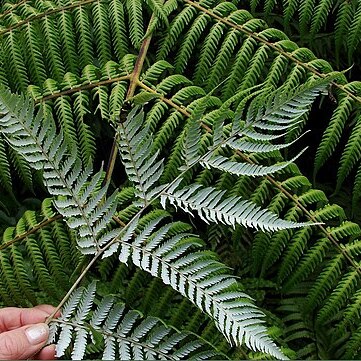A large tree fern. It has an erect trunk. It can be 10 m tall. Occasionally it has a creeping form. The fronds are about 4 m long. Underneath the fronds is white. The fronds are divided 3 times. The stalk is pale brown with a silver blush. It can be glossy and twisted. The bases of the stalks remain sticking out from the trunk.

